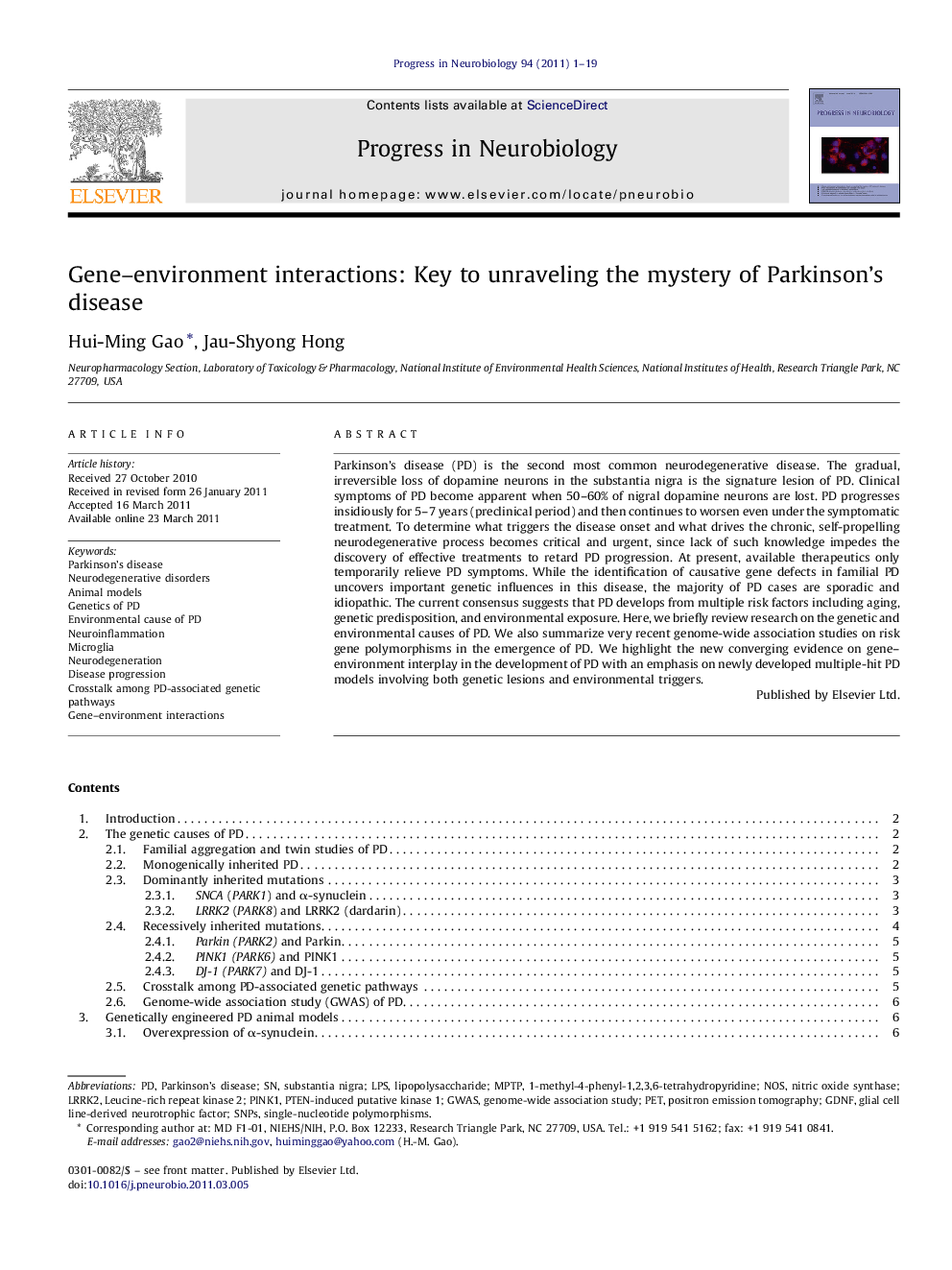| Article ID | Journal | Published Year | Pages | File Type |
|---|---|---|---|---|
| 4353636 | Progress in Neurobiology | 2011 | 19 Pages |
Parkinson's disease (PD) is the second most common neurodegenerative disease. The gradual, irreversible loss of dopamine neurons in the substantia nigra is the signature lesion of PD. Clinical symptoms of PD become apparent when 50–60% of nigral dopamine neurons are lost. PD progresses insidiously for 5–7 years (preclinical period) and then continues to worsen even under the symptomatic treatment. To determine what triggers the disease onset and what drives the chronic, self-propelling neurodegenerative process becomes critical and urgent, since lack of such knowledge impedes the discovery of effective treatments to retard PD progression. At present, available therapeutics only temporarily relieve PD symptoms. While the identification of causative gene defects in familial PD uncovers important genetic influences in this disease, the majority of PD cases are sporadic and idiopathic. The current consensus suggests that PD develops from multiple risk factors including aging, genetic predisposition, and environmental exposure. Here, we briefly review research on the genetic and environmental causes of PD. We also summarize very recent genome-wide association studies on risk gene polymorphisms in the emergence of PD. We highlight the new converging evidence on gene–environment interplay in the development of PD with an emphasis on newly developed multiple-hit PD models involving both genetic lesions and environmental triggers.
► Both genetic defects and exposure to environmental risk factors are linked to PD. ► Gene–environment interactions determine PD susceptibility. ► Multiple molecular pathways crosstalk and converge leading to PD neurodegeneration. ► Two-hit PD models are invaluable for further understanding of PD pathogenesis. ► Human association studies point to gene–environment interplay in the emergence of PD.
